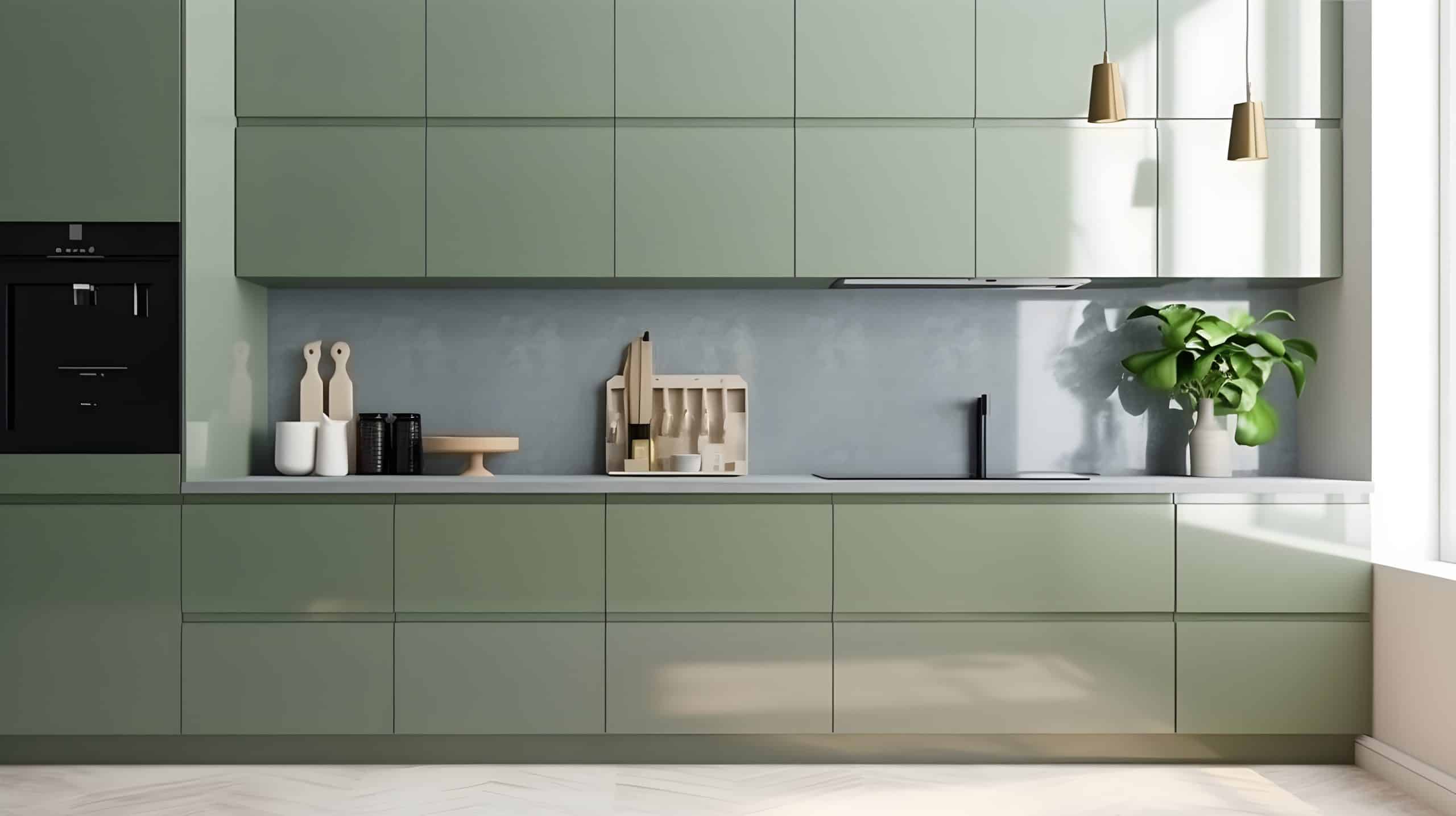Handleless cabinetry or joinery is a modern and sleek design approach that has its fair share of enthusiasts and skeptics. But what exactly sets it apart, and is it the right choice for your home? Let’s unpack the pros and cons of adopting this innovative style in your living space.
Instead of typical handles or knobs, handleless cabinetry makes use of “touch to open” technology. This marks a departure from the traditional kitchen look by seamlessly integrating door and drawer pulls into the unit’s structure or eschewing them entirely.
Pros
Sleek and modern aesthetics
The most touted benefit of handleless cabinetry is its ability to create a contemporary and streamlined look. With a seamless transition between the cabinet face and the rest of the kitchen, this ensures your design is on the cutting edge of trends, providing a timeless elegance that can enhance the value of your home.
Easy maintenance
One of the most practical advantages of handleless cabinetry is its ease of cleaning. Without handles or knobs, there are no nooks and crannies for dust, grease, or grime to collect. A simple wipe-down using mild household detergents or specialist cabinet cleaning solutions is all it takes to maintain your kitchen in a pristine condition.
Space-saving design
Handleless cabinet systems often support taller unit designs that can offer more storage space in a kitchen without looking bulky. The compact nature of handleless doors can sometimes provide better access to the contents without encroaching into other parts of the kitchen due to swinging handles. This can be particularly beneficial in a busy family kitchen, where every inch of space counts.
Cons
Limited grip
The touch-to-open system on handleless cabinets comes with a tactile adjustment. Those with wet hands or who prefer a more solid grip may find opening a little more challenging.
Fingerprints
The absence of handles can also mean more direct contact with the actual cabinet surface. Although this is not a problem unique to handleless designs, the risk of leaving behind oily fingerprints can be slightly higher without a handle to act as a buffer.
Installation
The installation of handleless cabinetry can be more complicated, particularly if you’re retrofitting an existing kitchen. The precision required for alignment and the need for quality materials to ensure a robust system can make handleless cabinets a pricier option. Additionally, the touch-to-open feature adds a component that may need maintenance over time.
Whether you love its unbroken lines and space-saving features, or are concerned about issues like grip and potential fingerprints, your home’s unique needs should guide your decision-making process. Keep in mind your current or new kitchen’s layout and design as well as your lifestyle and culinary habits.
Want to book in a site visit, ask a question about our building process or talk through your project? Call SE Building Solutions today on 0415 772 983

